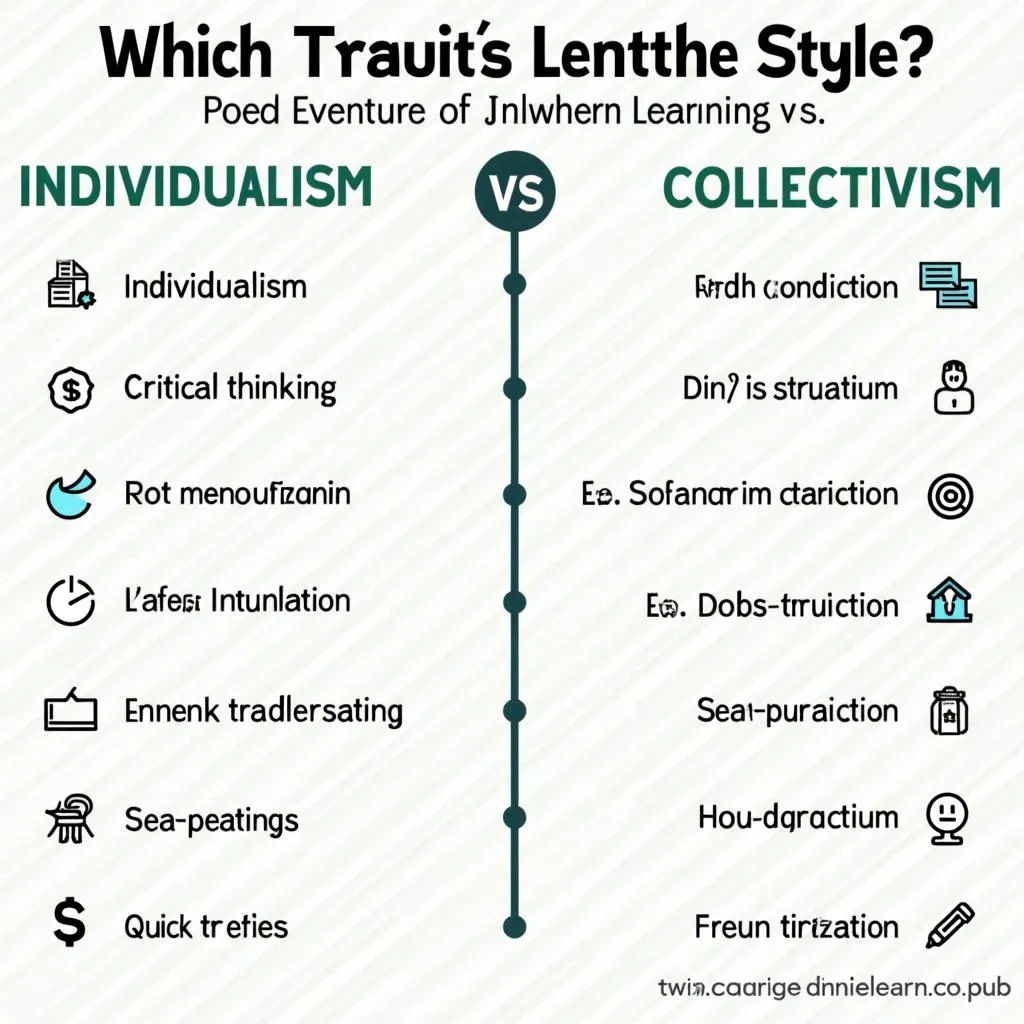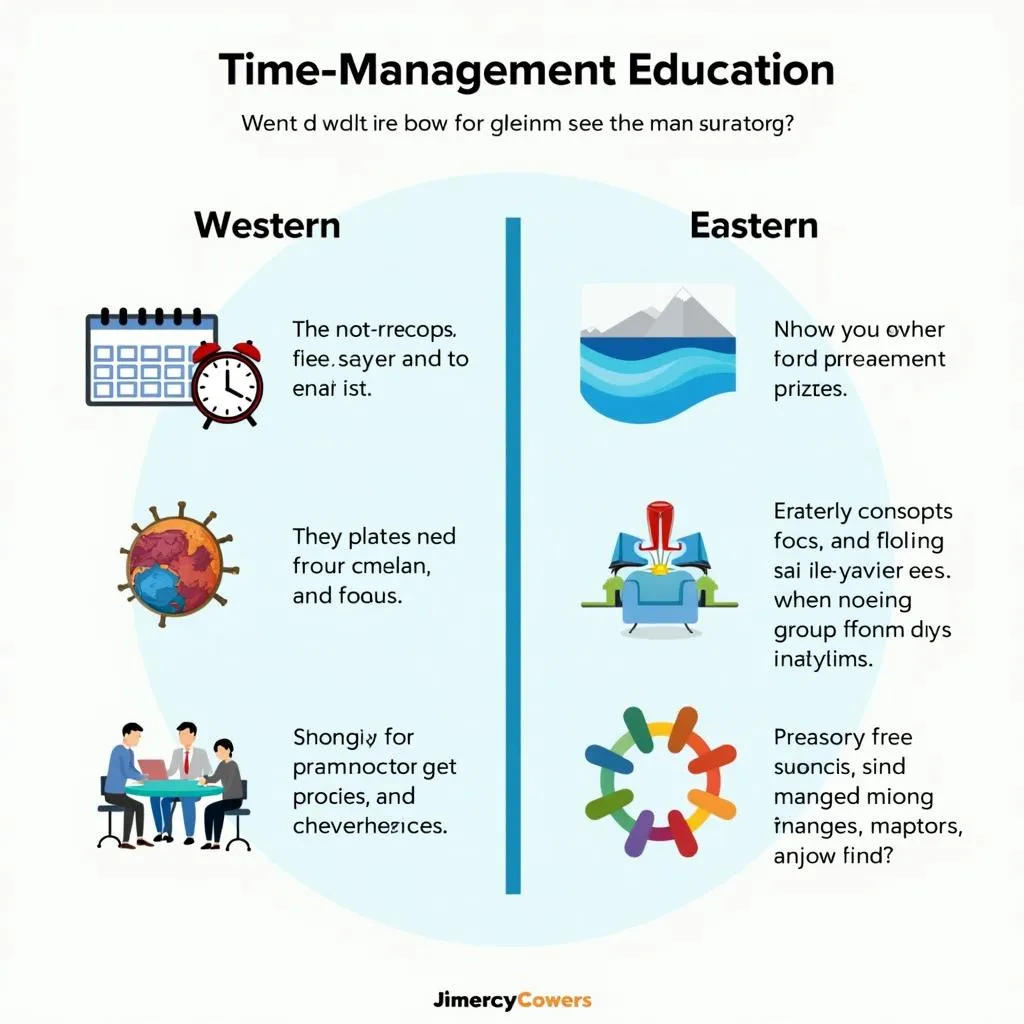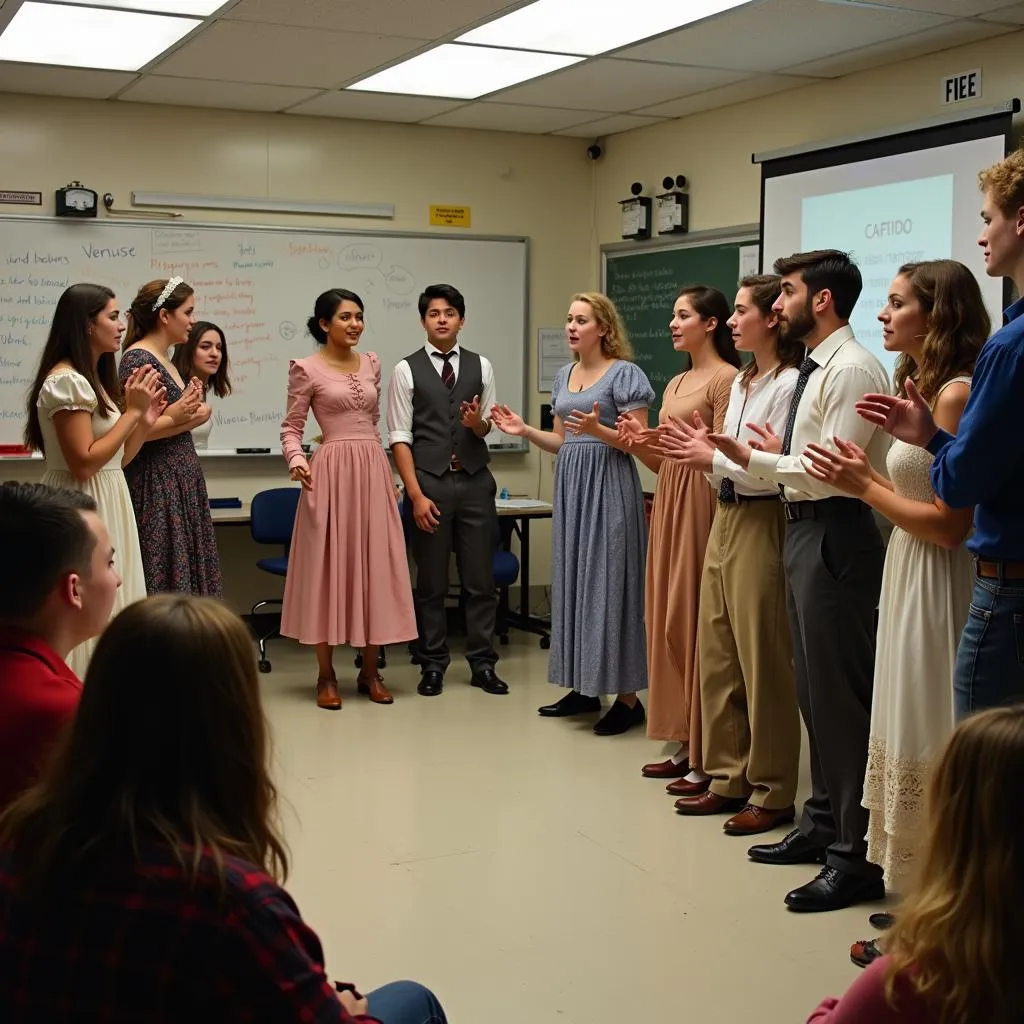The IELTS Reading test often explores complex topics, including cultural diversity in education. Today, we’ll focus on “Cultural differences in learning styles and student success” through a comprehensive practice test. This theme is particularly relevant in our globalized world, where how cultural diversity influences classroom management is increasingly important.
Nội dung bài viết
IELTS Reading Practice Test
Passage 1 – Easy Text
Cultural Approaches to Learning
In today’s globalized world, educators are increasingly aware of the impact of cultural differences on learning styles and student success. Research has shown that students from different cultural backgrounds may approach learning in vastly different ways, influenced by their upbringing, societal norms, and educational traditions.
For instance, Western education systems often emphasize individual achievement and critical thinking, encouraging students to question authority and express their opinions freely. In contrast, many Eastern cultures prioritize collective harmony and respect for authority, leading to learning environments where students may be less likely to speak up or challenge their teachers’ views.
These cultural differences can significantly affect student performance and engagement in multicultural classrooms. For example, a student from a culture that values rote memorization may struggle in a classroom that emphasizes creative problem-solving. Similarly, a student accustomed to collaborative learning might find it challenging to adapt to a more competitive academic environment.
Educators are now recognizing the need to adopt culturally responsive teaching methods to ensure all students can succeed, regardless of their cultural background. This approach involves understanding and incorporating diverse cultural perspectives into the curriculum and teaching strategies.
 Cultural learning styles comparison chart
Cultural learning styles comparison chart
Questions 1-5
Do the following statements agree with the information given in the reading passage?
Write:
TRUE if the statement agrees with the information
FALSE if the statement contradicts the information
NOT GIVEN if there is no information on this
- Cultural background has no impact on a student’s learning style.
- Western education systems typically encourage students to question authority.
- Eastern cultures generally prioritize individual achievement over collective harmony.
- Students from different cultural backgrounds always perform equally well in multicultural classrooms.
- Culturally responsive teaching methods aim to incorporate diverse cultural perspectives into education.
Questions 6-10
Complete the sentences below.
Choose NO MORE THAN TWO WORDS from the passage for each answer.
- Western education systems often emphasize individual achievement and ___.
- Many Eastern cultures prioritize collective harmony and ___ for authority.
- A student from a culture that values ___ may struggle in a classroom focused on creative problem-solving.
- Students accustomed to collaborative learning might find it difficult to adapt to a more ___ academic environment.
- Educators are adopting ___ teaching methods to ensure all students can succeed regardless of their cultural background.
Passage 2 – Medium Text
The Impact of Cultural Festivals on Student Learning
Cultural festivals play a significant role in shaping student experiences and learning outcomes, particularly in diverse educational settings. These events serve as a bridge between academic knowledge and real-world cultural understanding, offering students unique opportunities to engage with different traditions, customs, and perspectives.
Research has shown that participation in cultural festivals can enhance students’ intercultural competence, a crucial skill in today’s globalized world. By immersing themselves in the sights, sounds, and practices of various cultures, students develop a more nuanced understanding of cultural diversity and its implications for society and education.
Moreover, cultural festivals can serve as powerful tools for experiential learning. Students often take on active roles in organizing and participating in these events, which allows them to develop valuable skills such as project management, teamwork, and cross-cultural communication. This hands-on approach to learning about different cultures can be particularly effective in reinforcing classroom teachings and promoting deeper understanding.
The influence of community festivals on student learning extends beyond cultural awareness. These events can also have a positive impact on academic performance. Studies have found that students who participate in cultural festivals often demonstrate improved engagement with their studies, enhanced critical thinking skills, and a greater ability to draw connections between different subjects and real-world applications.
Furthermore, cultural festivals can play a crucial role in promoting inclusivity and social cohesion within educational institutions. By celebrating diversity and providing a platform for different cultural groups to showcase their heritage, these events can help create a more welcoming and inclusive environment for all students. This, in turn, can lead to improved student well-being and a stronger sense of belonging within the school community.
However, it is important to note that the effectiveness of cultural festivals in enhancing student learning depends largely on how they are integrated into the broader curriculum. Educators must ensure that these events are not treated as isolated occurrences but are instead woven into the fabric of the educational experience. This might involve pre-festival preparation activities, post-festival reflection sessions, and ongoing discussions about cultural diversity throughout the academic year.
 Students participating in a cultural festival
Students participating in a cultural festival
In conclusion, when thoughtfully implemented, cultural festivals can serve as powerful catalysts for enhancing student learning, promoting cultural understanding, and fostering a more inclusive educational environment. As our world becomes increasingly interconnected, the skills and perspectives gained through these experiences will undoubtedly prove invaluable for students’ future success.
Questions 11-14
Choose the correct letter, A, B, C, or D.
-
According to the passage, cultural festivals in educational settings:
A) Are purely for entertainment purposes
B) Have no impact on academic performance
C) Serve as a bridge between academic knowledge and cultural understanding
D) Are only relevant in non-diverse schools -
Participation in cultural festivals has been shown to enhance:
A) Students’ athletic abilities
B) Teachers’ salaries
C) School infrastructure
D) Students’ intercultural competence -
The passage suggests that cultural festivals can improve:
A) Only students’ cultural awareness
B) Students’ engagement, critical thinking, and ability to make connections
C) Teachers’ workload
D) School funding -
For cultural festivals to be effective in enhancing student learning, they should be:
A) Treated as one-time events
B) Focused solely on food and music
C) Integrated into the broader curriculum
D) Organized without student involvement
Questions 15-20
Complete the summary below.
Choose NO MORE THAN TWO WORDS from the passage for each answer.
Cultural festivals in educational settings offer numerous benefits for students. They provide opportunities for (15) learning, allowing students to develop skills such as project management and cross-cultural communication. Research has shown that participation in these events can enhance students’ (16) with their studies and improve their critical thinking skills. Moreover, cultural festivals play a crucial role in promoting (17) and social cohesion within schools, creating a more welcoming environment for all students. This can lead to improved student (18) and a stronger sense of belonging. To maximize the effectiveness of cultural festivals, educators should integrate them into the broader curriculum through activities such as (19) preparation and (20) sessions.
Passage 3 – Hard Text
Cultural Dimensions of Conflict Resolution in Educational Settings
The way conflicts are perceived, approached, and resolved in educational settings is profoundly influenced by cultural factors. As educational institutions become increasingly diverse, understanding these cultural dimensions becomes crucial for maintaining harmonious learning environments and promoting effective conflict resolution strategies.
Individualism vs. Collectivism
One of the most significant cultural dimensions affecting conflict resolution in schools is the dichotomy between individualistic and collectivistic societies. In individualistic cultures, prevalent in many Western countries, conflicts are often viewed as opportunities for personal growth and assertiveness. Students from these backgrounds may be more inclined to directly confront issues and advocate for their individual rights and needs.
Conversely, collectivistic cultures, common in many Asian, African, and Latin American societies, prioritize group harmony and face-saving. In these contexts, conflicts may be perceived as threats to social cohesion, leading to indirect communication styles and a preference for mediation or third-party interventions to resolve disputes.
Power Distance
The concept of power distance, which refers to the extent to which less powerful members of institutions accept and expect that power is distributed unequally, also plays a crucial role in conflict resolution approaches. In high power distance cultures, students may be less likely to challenge authority figures or express disagreement openly, preferring to maintain hierarchical structures even in conflict situations.
Low power distance cultures, on the other hand, tend to foster more egalitarian relationships between students and educators. This can lead to more open dialogue and direct negotiation in conflict resolution, with students feeling empowered to voice their concerns and participate actively in problem-solving processes.
Uncertainty Avoidance
Cultures with high uncertainty avoidance tend to have a lower tolerance for ambiguity and may seek to resolve conflicts quickly to restore a sense of order and predictability. In educational settings, this might manifest as a preference for clear rules and structured conflict resolution procedures.
In contrast, cultures with low uncertainty avoidance may be more comfortable with ambiguous situations and flexible in their approach to conflict resolution. This can result in more creative and adaptive problem-solving strategies, but may also lead to prolonged conflicts if clear resolutions are not reached.
Long-term vs. Short-term Orientation
The temporal perspective of a culture can significantly influence conflict resolution approaches in schools. Cultures with a long-term orientation may view conflicts as part of a broader, ongoing relationship and prioritize solutions that maintain harmony over time. This can lead to more patient, compromise-oriented approaches to dispute resolution.
Short-term oriented cultures might focus more on immediate results and quick resolutions, potentially leading to more confrontational or assertive conflict resolution strategies.
Masculinity vs. Femininity
In cultures characterized by high masculinity, conflict resolution in educational settings may emphasize competition, assertiveness, and “winning” disputes. This can lead to more adversarial approaches to conflict resolution, with a focus on individual achievement and recognition.
Feminine cultures, by contrast, tend to value cooperation, modesty, and caring for others. In these contexts, conflict resolution strategies in schools may prioritize consensus-building, compromise, and maintaining relationships over achieving personal victories.
Cultural differences in approaches to conflict resolution in schools highlight the need for culturally sensitive and adaptive conflict management strategies. Educators and administrators must be aware of these cultural dimensions to effectively navigate conflicts in diverse educational environments.
 Diverse group of students and teachers in conflict resolution session
Diverse group of students and teachers in conflict resolution session
Implementing culturally responsive conflict resolution practices requires a multi-faceted approach:
- Cultural awareness training for educators and students to recognize and respect diverse conflict resolution styles.
- Flexible conflict resolution frameworks that can adapt to different cultural preferences and communication styles.
- Promotion of intercultural dialogue to build understanding and empathy across cultural divides.
- Integration of diverse cultural perspectives into conflict resolution curricula and practices.
- Regular assessment and adaptation of conflict resolution strategies to ensure they remain effective in evolving multicultural contexts.
By acknowledging and addressing these cultural dimensions, educational institutions can create more inclusive and effective conflict resolution processes, fostering a positive learning environment for all students regardless of their cultural background.
Questions 21-26
Complete the sentences below.
Choose NO MORE THAN TWO WORDS from the passage for each answer.
- In individualistic cultures, conflicts are often seen as opportunities for personal growth and ___.
- Collectivistic cultures prioritize group harmony and ___.
- High power distance cultures tend to maintain ___ structures even in conflict situations.
- Cultures with high uncertainty avoidance prefer clear rules and ___ conflict resolution procedures.
- Long-term oriented cultures prioritize solutions that maintain ___ over time.
- In feminine cultures, conflict resolution strategies prioritize ___ and compromise.
Questions 27-30
Choose the correct letter, A, B, C, or D.
-
According to the passage, which of the following is NOT a cultural dimension affecting conflict resolution in schools?
A) Individualism vs. Collectivism
B) Power Distance
C) Technological Advancement
D) Uncertainty Avoidance -
In educational settings, students from low power distance cultures are more likely to:
A) Avoid confrontation with authority figures
B) Participate actively in problem-solving processes
C) Prefer indirect communication styles
D) Prioritize group harmony over individual needs -
Cultures with a short-term orientation tend to focus on:
A) Patient, compromise-oriented approaches
B) Maintaining harmony over extended periods
C) Immediate results and quick resolutions
D) Avoiding conflict altogether -
The passage suggests that implementing culturally responsive conflict resolution practices requires:
A) Adopting a single, universal conflict resolution strategy
B) Ignoring cultural differences in educational settings
C) A multi-faceted approach including cultural awareness training
D) Focusing solely on individualistic conflict resolution styles
Questions 31-35
Do the following statements agree with the information given in the reading passage?
Write:
TRUE if the statement agrees with the information
FALSE if the statement contradicts the information
NOT GIVEN if there is no information on this
- Cultural factors have no influence on how conflicts are perceived and resolved in educational settings.
- Students from collectivistic cultures are more likely to directly confront issues in conflict situations.
- High uncertainty avoidance cultures prefer ambiguous and flexible conflict resolution procedures.
- Masculine cultures tend to emphasize competition and assertiveness in conflict resolution.
- Culturally responsive conflict resolution practices require regular assessment and adaptation.
Answer Key
Passage 1
- FALSE
- TRUE
- FALSE
- FALSE
- TRUE
- critical thinking
- respect
- rote memorization
- competitive
- culturally responsive
Passage 2
- C
- D
- B
- C
- experiential
- engagement
- inclusivity
- well-being
- pre-festival
- reflection
Passage 3
- assertiveness
- face-saving
- hierarchical
- structured
- harmony
- consensus-building
- C
- B
- C
- C
- FALSE
- FALSE
- FALSE
- TRUE
- TRUE
This comprehensive IELTS Reading practice test explores the intricate relationship between cultural differences, learning styles, and student success. By engaging with these passages, you’ll not only improve your reading skills but also gain valuable insights into cultural diversity in approaches to student-led conferences and other educational contexts. Remember, understanding these cultural nuances is crucial for success in both the IELTS exam and real-world multicultural environments.


